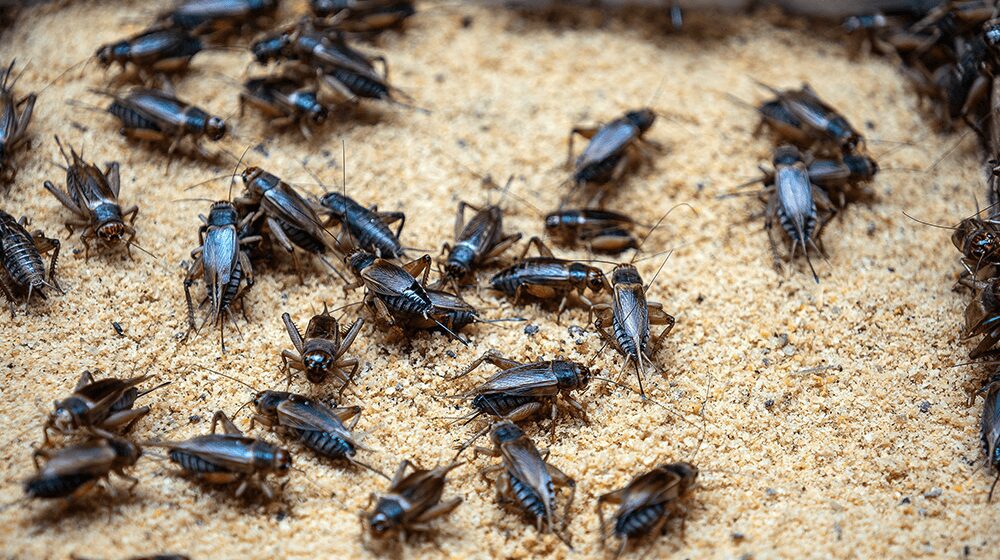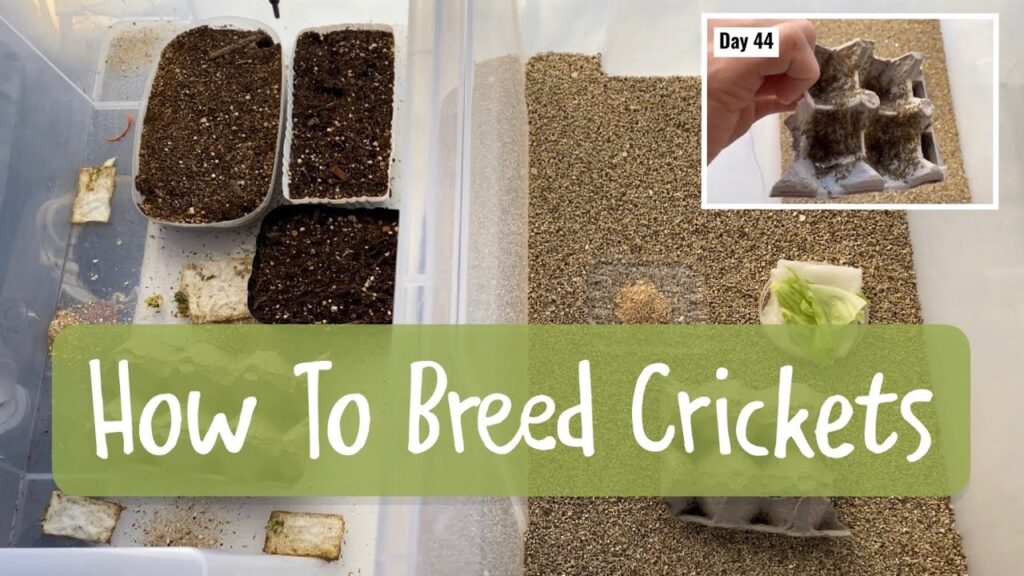Crickets are a popular food source for lizards, and breeding them at home can be an affordable and convenient way to provide your pet with a steady supply of nutritious insects. However, getting started with cricket breeding can seem daunting, especially if you’re new to the hobby. In this article, we’ll cover everything you need to know about how to breed crickets for lizards.
What You Need to Get Started
Before you start breeding crickets, there are a few things you’ll need to have on hand:
1. Cricket Enclosure
A cricket enclosure is a container where you’ll keep your crickets alive. You can purchase one from a pet store, or make your own by repurposing a plastic storage bin or aquarium. The enclosure should be well-ventilated and escape-proof.
2. Substrate
Substrate is the material that lines the bottom of your cricket enclosure. It provides a surface for the crickets to stand on and helps absorb moisture. Common substrates include coconut coir, peat moss, and vermiculite.
3. Food
Crickets need a balanced diet to thrive, so it’s important to provide them with a variety of foods. Commercial cricket feed is available at most pet stores, but you can also feed your crickets fresh fruits and vegetables.
4. Water Source
Crickets need access to water to stay hydrated. You can provide water in a shallow dish or use a water gel product designed specifically for crickets.
5. Heat Source
Crickets thrive in warm temperatures, so you’ll need to provide a heat source to keep them comfortable. A reptile heating pad or heat lamp can work well for this purpose.
How to Breed Crickets for Lizards

Now that you have everything you need, it’s time to start breeding crickets. Here’s a step-by-step guide:
Step 1: Set Up Your Enclosure
Line the bottom of your cricket enclosure with substrate and add a water source and food dish. Place a heat source on one side of the enclosure.
Step 2: Introduce Your Crickets
Purchase a batch of adult crickets from a pet store or breeder. Ideally, you should have a ratio of three females to every male. Release them into the enclosure and allow them to acclimate for a few days.
Step 3: Provide Optimal Conditions
Crickets require specific conditions to breed successfully. Ensure that the temperature in the enclosure stays between 80-90°F and that there is enough humidity (around 75%).
Step 4: Wait for Eggs
Female crickets will lay their eggs in the substrate. After a few days, you should start to see small white or yellow eggs scattered throughout the enclosure.
Step 5: Incubate the Eggs
Once you’ve collected the eggs, place them in a separate container with moist substrate. Keep the container at the same temperature as the main enclosure and mist the substrate regularly to maintain humidity. The eggs will hatch in about two weeks.
Step 6: Raise the Juvenile Crickets
Once the eggs hatch, you can transfer the juvenile crickets back into the main enclosure. Feed them a high-protein diet and ensure that they have plenty of space to grow.
FAQ
How many crickets should I breed at once?
The number of crickets you should breed depends on the size of your lizard and how many insects it eats per day. As a general rule, aim to breed a quantity that will last you two to three weeks.
Do I need to provide a special light source for my crickets?
Crickets do not require UVB lighting like reptiles do, but they do need a heat source to maintain a consistent temperature in their enclosure.
How often should I clean my cricket enclosure?
It’s important to clean your cricket enclosure regularly to prevent the buildup of waste and bacteria. Aim to clean the enclosure once a week or as needed.
Can I breed crickets year-round?
Yes, with the right conditions, you can breed crickets year-round. However, keep in mind that high temperatures and humidity levels are necessary for successful breeding.
What if my crickets aren’t breeding?
If your crickets aren’t breeding, it may be due to inadequate conditions in the enclosure. Check that the temperature and humidity levels are optimal and ensure that your crickets have access to plenty of food and water.
Conclusion
Breeding crickets for lizards is a rewarding hobby that can save you money and provide your pet with a nutritious food source. By following the steps outlined in this article and providing optimal conditions for your crickets, you’ll be well on your way to success.
Whether you’re a seasoned cricket breeder or just getting started, it’s important to remember that the health of your crickets is crucial to the health of your lizard. By providing a balanced diet, clean living conditions, and optimal temperatures and humidity levels, you can ensure that your crickets are alive, healthy and nutritious for your pet.
In addition to the tips and tricks covered in this article, there are many resources available online and in print to help you learn more about cricket breeding. Whether you’re looking for advice on feeding, breeding, or caring for your crickets, there’s a wealth of information out there waiting to be discovered.
So why not give it a try? With a little patience and dedication, you can become a successful cricket breeder and provide your lizard’s diet with a tasty and nutritious food source for years to come.



